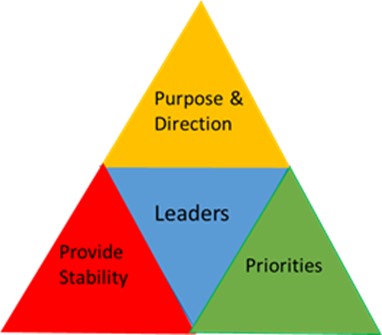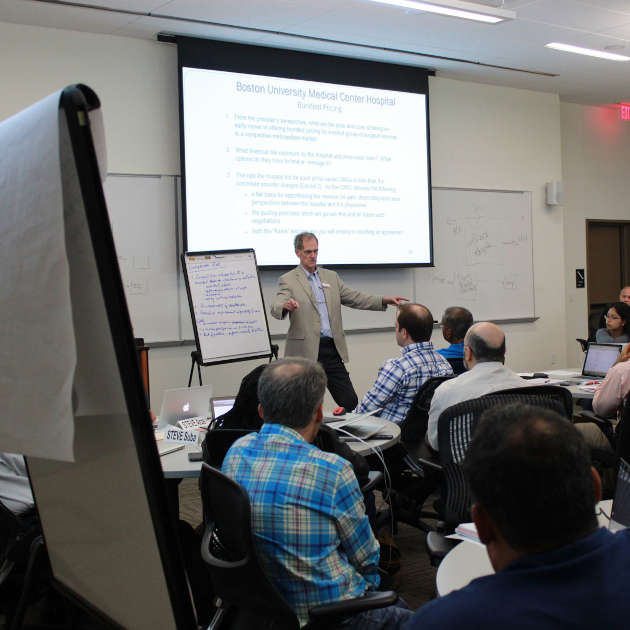
Extraordinary times call for extraordinary leaders. In times of crisis, leaders come face-to-face with their leadership moment. In those moments, both the character of the leader emerges (the character of a leader is not developed in a single moment), as well as an opportunity to refine or further develop (character can be shaped in a single moment) one’s character. Those moments can indeed be defining (and refining) in terms of scope and impact, and be one of the foundational blocks upon which leaders build personal and professional resiliency, and from which they eventually draw strength and credibility. Leading in uncertain, volatile and complex times is often the critical challenge that brings out the leader’s “best.” Or, not. Leadership after all, has a lot more to do with who you are and what you do rather than the title or position on the organization chart. Without effective leadership, the only three things that happen in organizations naturally is “friction, confusion and underperformance.”
Many authors and practitioners have noted the importance of the leader’s character… that point cannot be underestimated. For example, E. Puryear wrote a great book titled “Nineteen Stars: A Study in Military Character and Leadership.” He highlighted four of America’s most outstanding generals of World War II: Marshall, MacArthur, Eisenhower and Patton. As you might suspect, Puryear makes the case that despite their extraordinary knowledge, skills and abilities, the most important attribute that must be developed and refined is one’s character (more on General Patton later). Character, the author says, is “everything in leadership.” Character is the cornerstone of effective leadership. More specifically, the integrity of the leader is the cornerstone upon which all other traits emerge. Full stop. Period.
That said, while the character of the leader is of supreme importance and cannot be underestimated, results matter. There is little value in being a leader of character if nothing happens. Likewise, the way the leader gets the results matters. In other words, effective leadership is the combination of character AND results…both are needed. This is particularly true in times of crisis.
While the foundational principles of effective leadership remain unchanged, leading in times of crisis requires leaders to take three discrete actions: Provide stability; define the Purpose; identify Priorities. While there is no guarantee that action in a crisis will win the day, failure to take action will surely result in losing the day. I suggest that these three simple ideas can be key enablers to success.

This framework is depicted by the Taking Action Model (Figure 1). Note that at the center of the model is the leader. Leaders provide the touch points and organizational glue that ensure continuity, consistency and collaboration by bringing all three actions together in a coordinated way. Without effective leadership the effort can be disjointed, and disruptive.
Taking Action
Provide Stability:
- Define the current reality: One of the first responsibilities of a leader is to define the current reality. Do this by being transparent about the facts. Shared challenges bond teams.
- Deliberate Calm: While the facts might be grim and disheartening, leaders must show optimism grounded in reality. Enthusiasm can be an organizational and operational multiplier; painting a picture of a hopeful future is important (to paraphrase Robert Kennedy, leaders are the ripple of hope). Clearly understanding the current situation and explaining it in simple terms settles the “herd.” Keep calm and carry on!
- Deliver on commitments: It is easy to promise rainbows and unicorns because that is the message of hope most want to hear. However, leaders must be selective on the promises they make. Commitments to families, workers, and partners can be reassuring but must be achievable and sincere. Keeping those commitments builds trust and shows you care. Making a commitment and failing to deliver only makes the matter worse.
Purpose & Direction:
- Define the “what”: Leaders must be very clear on what needs to happen, when “it” needs to happen, and why “it” needs to happen. Being clear on the direction points the organization to the new North. In uncertain times there is a natural tendency to wait for perfect data or insights…it never happens. Allowing the team to take decisive, quick and bold action far outweighs the risk of inaction. The “what” aligns the team and keeps everybody on the same sheet of music.
- Distributed Leadership: Do not fall into the trap of believing the leader can micromanage their way out of a crisis. The opposite is true. Providing clear direction enables those on the front line to determine the “how”…never underestimate the power of clarity. Trust is the glue that enables radical collaboration and enables distributed and networked teams to thrive in a crisis. No crisis was ever solved alone.
- Decisions: Empowered teams are teams that are responsible and accountable. Empowered teams that understand the purpose and direction will make the right decisions at the right place and time.
Priorities:
- Determine the scope of current operations, but keep an eye on “what’s next”: Determining the top priorities provides focus and conserves resources that might needed for future operations. Conservation is as important as procurement. The leader can focus on the “must dos” versus things that can wait. It also allows the leader to build capacity for the future. While the team is focused on the immediate crisis at hand, creating forum for what the future might look like enables the team to merge current operations with future operations making the transition less painful and quicker.
- Develop a communication strategy: Establish a central “command center” to coordinate enterprise actions, allocate resources, and filter and provide communications. Communicate early, often, and with a sense of urgency. Straight talk wins the day. Messages must be clear, concise and time stamped (version control is important). Use all available means to shape the environment with facts and actions. Without proactive communication stakeholders (internal and external) will form their own narrative. Build these critical communications into your normal business or operational cadence.
Design a process for reviewing actions: Nobody is as good as they think they are, and nobody has a corner on good ideas. While staying the course might make sense, leaders must develop a process for reviewing current actions and have the courage to recognize where and when a change in direction is needed. The best leaders are learning leaders. The best organizations are learning organizations.
Summary Matrix: Mind Your “Ps” and “Ds”
|
Provide Stability |
Purpose & Direction |
Priorities |
|
Define the current reality |
Define what needs to be done and why |
Determine current ops & future actions |
|
Deliver on commitments |
Distributed leadership |
Develop a communication strategy |
|
Deliberate calm |
Decisions at the right place, time and by right team |
Design a process for review that enables change, adaptability and flexibility |
A well-known story that illustrates the importance of purpose and direction in order to achieve results is Lewis Carroll’s children’s novel titled “Alice’s Adventures in Wonderland” (written, by the way, in 1865 at the end of the Civil War). In the book, Alice learns an important lesson as she was searching for a way out of Wonderland and came to a fork in the road. “Would you tell me, please, which way I ought to go from here?” she asked the Cheshire Cat. “That depends a good deal on where you want to get to,” the Cat responded. Alice replied that she really did not much care. The smiling Cat told her in no uncertain terms: “Then it doesn’t matter which way you go.”
Knowing where you’re going requires having a clear vision. A compelling vision builds trust, inspires confidence, enables collaboration, is interdependent, is motivational, and requires mutual accountability for success. In a time of crisis, your leadership moment will be defined by the direction you choose.



